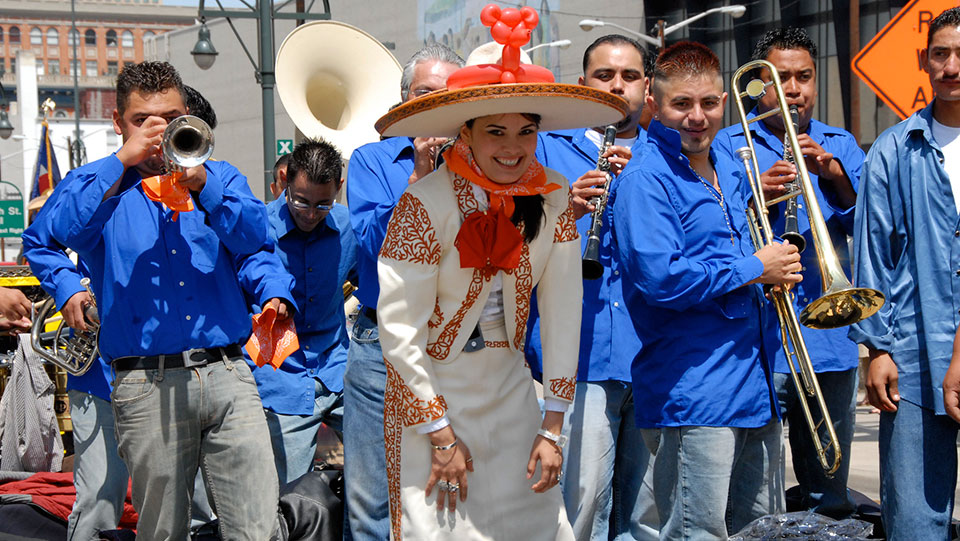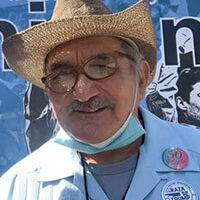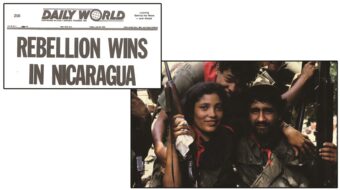
Millions of Mexican Americans, mexicanos, Latinos, African Americans, Asian Americans, Native Americans, white Americans — Americans of all kinds — will take part in Cinco de Mayo events across the United States.
The holiday is celebrated more in the Southwest, but increasingly in other parts of the country as well.
It is as American as tamale pie, almost as much as May Day, the international workers’ day, but more popular with the media and government.
The celebration of Cinco de Mayo in the U.S. precedes that of May Day. The victory of the meztizo/indio Mexican troops over the French at Puebla in 1862 predates the attack on the workers in Chicago’s Haymarket Square by well over a decade. One of my great-grandfathers was helping organize Cinco de Mayo events in Tucson by the early 1880s.
Cinco de Mayo is now recognized as a day for Mexican Americans, a sort of St. Patrick’s Day for Mexicans. Indeed, David Sanchez, who during the days of the Chicano movement was head of the Brown Berets, is urging Mexican Americans to wear brown this May 5 like green is worn on St. Patrick’s Day.
May 5 in the U.S. may be more popular among Mexican Americans (though maybe not mexicano immigrants) than Sept. 16, celebrating Mexican independence from Spain. Historically, Sept. 15-16, 1810, was when Mexico and other Latin American lands declared their independence from Spain. All this is now commemorated as part of Hispanic month.
Cinco de Mayo has significance for Mexican Americans because its deeper historic meaning resonates with their experience of racial and national oppression here in the United States. The French-led invasion of Mexico came in large part because the victory of the democratic reform movement — led by Benito Juarez against the authoritarian government based on a social hierarchical racist caste-like system and strong clericalism — was threatening France’s investments in Mexico. The defeat of the French at Puebla helped rally the Mexican people to struggle against foreign intervention and for democratic rights and equality. A full-blooded indigenous Zapotec, Juarez, led this reform movement.
The democratic reformist Juarez is more popular with Mexicans and Mexican Americans than the Spanish-born cleric Father Hidalgo who gave the call to start the Mexican revolution against Spain. The brown-skinned Virgen de Guadalupe, in whose name Hidalgo declared independence, is more popular than both Juarez and Hidalgo and is also an icon of racial equality.
The contributions to our democratic heritage from immigrants began with the English, of course. The German, French and Irish strengthened the freedom of religions traditions.
The San Patricios were Irish American immigrants who deserted the U.S. forces invading Mexico during the Mexican War and joined the resistance. To Mexicans, they are heroes. Immigrants were among the martyrs of Haymarket. Sacco and Vanzetti and many other 20th century martyrs were immigrants. Cinco de Mayo celebrates in some ways the mexicano immigrant contribution to our democratic traditions in the U.S., if we go beyond the commercialized version of it.
One way to acknowledge this is to combine the commemorations of Cinco de Mayo with May Day. In some ways, the support for Cinco de Mayo by the powers that be developed here as an attempt to detract from May Day. Celebrating the international workers’ day was one of the traditions Mexican immigrants brought here from their homeland. That’s all the more reason to celebrate democracy on both days.
This commentary was originally published in April 2005.
Photo: Cinco de Mayo celebration in Denver, Colo. (Obie Fernandez/CC)












Comments